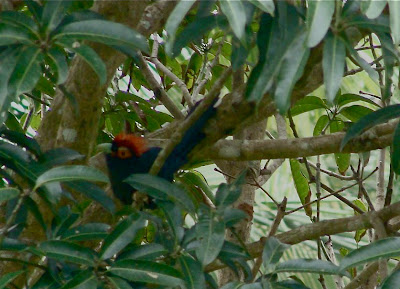At the far end of the farm, below a ravine is a small river. At present, it is still a steep and rough hike down (and an equally tough climb going up), which somehow keeps the area inaccessible.
Meantime, we have planted a lot of hardwood seedlings on the hike down, local trees like mulawin, narra, daô, cúpang, ditâ, ýlang-ýlang and yakál. We did so not only for aesthetic purposes but also to hold the soil together before we even think of doing anything with it. As it is now, it is already enchanting: strangler figs with strange-looking berries and wild palms (especially fishtails and sugar palms, locally called káong), forest birds and trees I have never even seen cover the slope. What more just after a couple of years? After all, it's good that it is not yet easy to reach as this gives us time to let the area re-generate as organically as possible.
The waters are from Malarayat, no doubt and even though I have been to the river more than a dozen times, it has never looked the same every time I go down there. The atmosphere in the river changes more often than any other area in the farm.
There are lush ferns (above) that naturally grow on the banks and some rocks, including the edible pakô which always flourish after some rain. There are small fish, and on our side, there are even two natural springs. In time, I will build a stairway going down, but meanwhile, enjoy the photos :)
 |
| My German Shepherd, Vitra, then still a pup. |



































